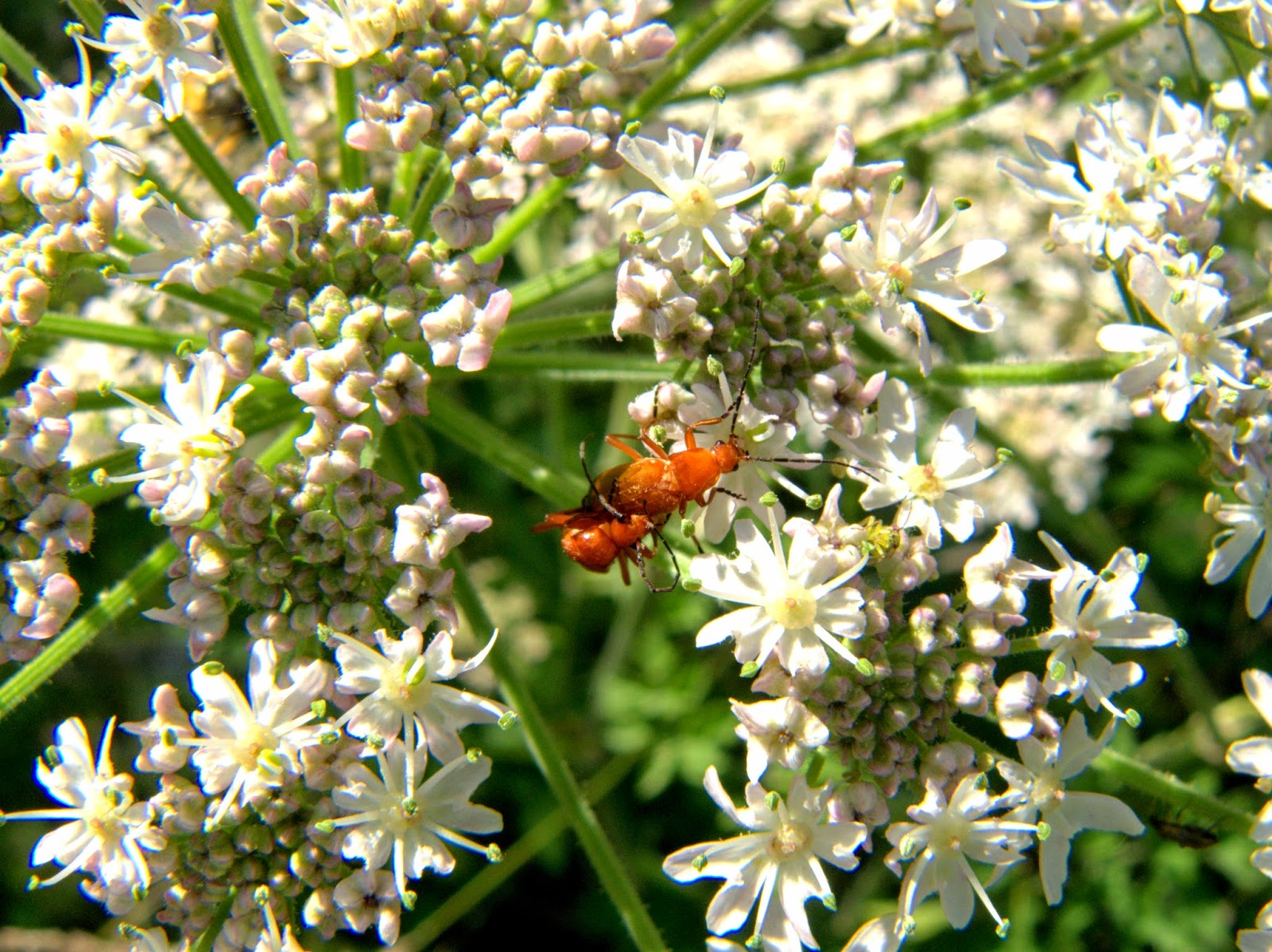These pictures are from Surrey ten days ago in Shabden Parknature reserve Click the link for more
info'.
According to http://ukmoths.org.uk/ Nemophora
metallica "is one of the 'longhorn' moths, the male has antennae three
times the length of the forewings, the female around half this length. The
wings have a relatively plain bronzy sheen.
Like other members of the genus, the larvae feed at first on
seeds and later on leaves or leaf-litter, mainly of field scabious (Knautia
arvensis). Occurring in the south of
England and East Anglia, the moths fly in June and July during the day."
There were scores of these Micro moths feeding on Scabious
flowers ten days ago.





























































